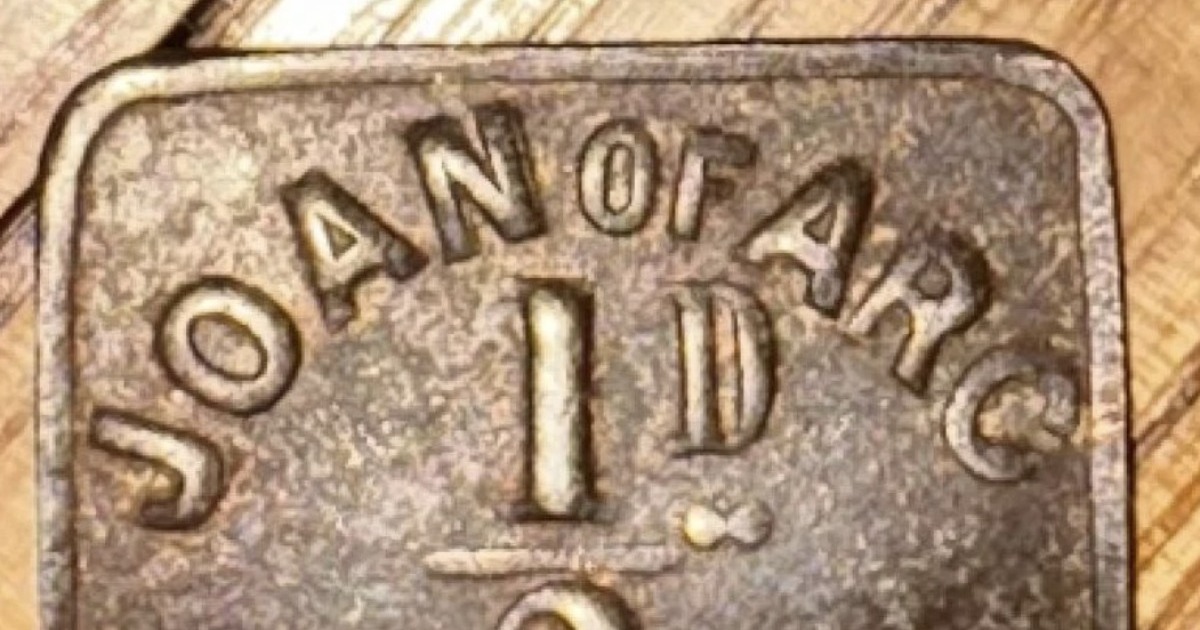This Everyday Item Is a Portal to the Past

Source: Reddit
The other day, I came across a curious little object—a small, square token made of metal, worn down with time. On it were the words “Joan of Arc” and “½ D.” At first, I didn’t think much of it. Maybe it was an old coin? A tool tag? But the more I looked into it, the more fascinating its story became. This wasn’t just a token—it was someone’s paycheck. These Joan of Arc Canning Company tokens serve as a remarkable piece of industrial history.
Yep, back in the 1880s, if you worked at the Joan of Arc Canning Company in Illinois, this tiny piece of metal might’ve been handed to you at the end of a long, hard day. But before you start imagining what you’d buy with it, there’s a catch: you couldn’t spend this token anywhere but the company store.
This little square, though simple on the surface, represents so much about what life was like for workers over a century ago. Let’s take a closer look at the story behind it.
Joan of Arc: Not Just a Name
The Joan of Arc Canning Company got its start in Illinois during the late 1800s, in the thick of the industrial boom. The company specialized in canning vegetables—beans, mostly—and they weren’t shy about marketing their goods. By naming the company after Joan of Arc, they tied themselves to an image of courage, strength, and reliability. It’s a name that stands out, even today.
But behind that bold name was a very different reality for the workers who spent their days canning vegetables. Instead of receiving cash for their work, employees were often paid in tokens like the one I found. These tokens weren’t worth much outside the factory, and that’s because they weren’t meant to leave the company’s orbit.
What Were Tokens For?
Picture this: you finish your shift after a day of repetitive, back-breaking work. Your employer hands you small, metallic tokens instead of money. Each one is stamped with the company’s name and a denomination—“½ D,” for half a penny. You take the tokens to the company store. There, you buy bread, soap, or maybe new boots for your kids.
But here’s the catch: you couldn’t use those tokens anywhere else. The Joan of Arc Canning Company only allowed them at the company store, where they controlled everything. These stores often charged higher prices than regular shops, and without cash in hand, you had no option but to shop there.
So, while you worked hard to earn those tokens, they’d go right back into the company’s pocket. It was a frustrating system—one that left workers stuck, unable to save or shop elsewhere.
The Tokens Themselves
The token I found was small and square, likely made of brass or copper. The token displays a simple design: “Joan of Arc” across the top, “½ D” in the center, and a number on the bottom, possibly representing a year or batch number. Designers often made tokens like this distinct from actual coins to prevent accidental use as legal tender.
It’s strange to think of a piece of metal like this being someone’s entire day’s pay—or even just part of it. But these tokens were a physical representation of the worker’s relationship with the company. They were a reminder of who held the power in this system, and for workers, they served as both wages and limits.
Life in a Company Town
The Joan of Arc Canning Company followed a common trend of the time. Many factories and mines operated in company towns. Employers didn’t just run the business—they controlled the entire community.

The company owned the housing, the store, and sometimes even the schools and churches. For workers, this setup could feel like a mixed blessing. On one hand, everything you needed was close by. On the other hand, it often felt like you couldn’t escape the company’s control.
It’s easy to imagine what life might’ve been like for someone working at Joan of Arc. Maybe you’d wake up in a small, company-owned house, head to the factory for a long day of canning vegetables, and then stop by the company store on your way home to spend your tokens on dinner. It wasn’t much of a choice, but for many, it was the only option.
Why These Tokens Still Matter
Today, tokens like these are no longer a part of everyday life. But for collectors and history buffs, they’re fascinating artifacts. Each one tells a story—not just about the company that issued it, but about the people who held it.
When I hold this token, I can’t help but think about the worker who earned it. Maybe it jingled in their pocket as they walked home, or maybe it felt heavy with the weight of a hard day’s work. These tokens are a reminder of a time when life wasn’t always fair, but people persevered. They worked hard, cared for their families, and made do with what they had.
A Glimpse Into the Past
The Joan of Arc Canning Company is long gone, but its tokens remain as little reminders of a bygone era. They’re not just pieces of metal—they’re pieces of history, each one carrying the story of the people who came before us.
So, if you ever come across a token like this at an antique store or in a dusty drawer, take a closer look. It’s not just a curiosity. It’s a connection to the past—a reminder of the workers who shaped our history, one can of beans at a time.